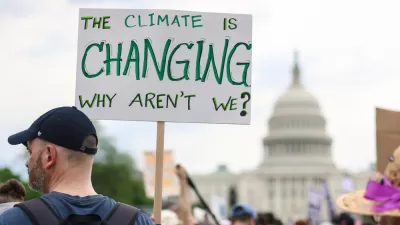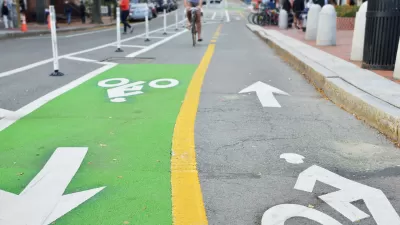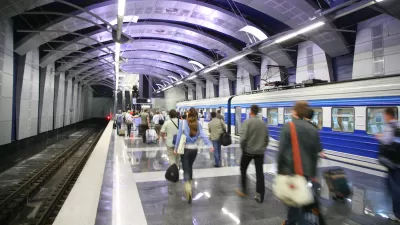The Project for Public Spaces has been sending around the e-mail circuit a mock-up of a Time magazine cover dated April 1 (no fooling) 2017, with a “Placemaking” headline acclaiming the triumph of smart growth principles. 2017? They’re being way too modest.
The Project for Public Spaces has been sending around the e-mail circuit a mock-up of a Time magazine cover dated April 1 (no fooling) 2017, with a "Placemaking" headline acclaiming the triumph of smart growth principles. 2017? They're being way too modest.

For most of the 1990s and into this century, mixed-use, pedestrian and transit friendly places were the oddity, the enclave, some place to visit. Planner-tourists went to Seaside, the Kentlands, Celebration, Mashpee Commons, Laguna West. Meanwhile some communities were steadily, without much fanfare, remaking the physical form of their place.
About six years ago, Fort Collins, Colorado, even while under constant growth pressure, started restoring the notion of authentic neighborhoods by requiring a mix of housing types in each neighborhood and specifying a proportion that had to be within three-fourths a mile from a neighborhood center or commercial district. They worked on better street connectivity.
Charlotte, North Carolina's been doing the hard work of passing ordinances to make a Centers and Corridors policy become real. People are moving to town centers to live where people never lived before, such as downtown Chattanooga. These places are not citadels of progressivism; they're not Portland, Oregon. Salt Lake City is home to a huge emerging mixed-use residential community that could be a monument to the principles of smart growth. These are places better known for conservative, limited government intervention in the marketplace. But they're also cities where public officials have figured out that building places that attract people to live and work and walk in a more vibrant urban scene pays off in building a population base that is better educated. And that brings the most coveted employers.
In the world of young fashionistas, you know something isn't hip any longer when someone shows up wearing it who shouldn't – like an aging boomer wearing a hoodie. Perhaps the same principle applies here. More likely what we have is a situation in which smart-growthers, getting older themselves, don't seem to have this figured out yet that their core argument is winning. Their conference agendas look stuck still in the drive for legitimacy, in persuading people to see the first light. We'll know for sure that new urban and smart growth and place-making are now mainstream when we see those conference agendas focused on helping communities get their plans and ordinances aligned with the new market.

Manufactured Crisis: Losing the Nation’s Largest Source of Unsubsidized Affordable Housing
Manufactured housing communities have long been an affordable housing option for millions of people living in the U.S., but that affordability is disappearing rapidly. How did we get here?

Americans May Be Stuck — But Why?
Americans are moving a lot less than they once did, and that is a problem. While Yoni Applebaum, in his highly-publicized article Stuck, gets the reasons badly wrong, it's still important to ask: why are we moving so much less than before?

Research Shows More Roads = More Driving
A national study shows, once again, that increasing road supply induces additional vehicle travel, particularly over the long run.

Judge Halts Enforcement of Anti-Homeless Laws in Grants Pass
The Oregon city will be barred from enforcing two ordinances that prosecute unhoused residents until it increases capacity and accessibility at designated camping sites.

Advancing Sustainability in Los Angeles County Schools
The Los Angeles County Office of Education’s Green Schools Symposium brings together educators, students, and experts to advance sustainability in schools through innovative design, climate resilience strategies, and collaborative learning.

Using Old Oil and Gas Wells for Green Energy Storage
Penn State researchers have found that repurposing abandoned oil and gas wells for geothermal-assisted compressed-air energy storage can boost efficiency, reduce environmental risks, and support clean energy and job transitions.
Urban Design for Planners 1: Software Tools
This six-course series explores essential urban design concepts using open source software and equips planners with the tools they need to participate fully in the urban design process.
Planning for Universal Design
Learn the tools for implementing Universal Design in planning regulations.
City of Moreno Valley
Institute for Housing and Urban Development Studies (IHS)
City of Grandview
Harvard GSD Executive Education
NYU Wagner Graduate School of Public Service
City of Cambridge, Maryland
Newport County Development Council: Connect Greater Newport





























